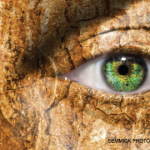In the case of equilibrium, the immune system forces are active against the cancer, but the cancer is not passive. Instead, the cancer is genetically flexible and is able to drop chromosomes that are not advantageous. In this case, the cancer may lose the antigen-produce mutation, thereby eluding the immune system. If the cancer is not particularly active, the patient may experience equilibrium between the immune system and the cancer. Alternatively, the cancer may be able to shift enough that it completely escapes the immune system in an immunoedited form.
“I think the therapeutic implications are potentially great,” said Dr. Rosen. “Remember, though, that this is an early study. … This is really defining a great way forward. We don’t know yet what this is going to mean for patients. It’s going to be a really exciting time to be able to do this research.”
The study: Joseph CG, Darrah E, Shah AA, et al. Association of the autoimmune disease scleroderma with an immunologic response to cancer. Science. 10 Jan 2014;343(6167):152–157. Published online Dec. 13, 2013 [DOI:10.1126/science.1246886].
Lara C. Pullen, PhD, is a medical writer based in the Chicago area.

